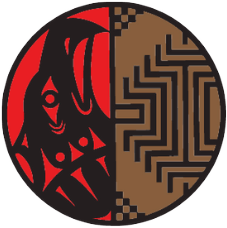Elementary Unit 1 Washington State History

Corresponding Material
Tribal Perspectives of American History in the Northwest
- Chapters 1-3
- Teacher Guide
- 1881 Thomas Symons Map
- Timeline
- Blank Timeline
- Linguistic Map
- NW Tribal Homeland Territories Base Map
- USGS Base Map
Native Homelands Along the Lewis and Clark Trail
Exploring the Pacific Northwest Prior to Statehood
Tribal Homelands
Historical Era
Time Immemorial to Treaties
STI Unit Overview
These lessons introduce students to the tribal homelands that predate non-Indian settlement in the Northeastern part of North America as well as what is now Washington State. Students will identify or explore local tribes by comparing/contrasting tribal lifeways of particular tribes as well as contacting local tribes for involvement, not just information. These lessons introduce to students the belief, like most societies, that they have been placed here by their Creator and have inhabited this land since the beginning of time, or as tribal people say, since time immemorial. Once students see how many and to what extent independent nations existed before non-Indian settlement, the concept of tribal sovereignty - also introduced in this unit - will be easier to grasp.
Accordingly, students will be introduced to the promises tribes have made to the Creator to care for the land, its resources, and all the living creatures who share the land with them. This is known by many tribes in the region as the Covenant with the Creator. For the purpose of consistent language in this unit of study, we will refer to this sacred trust as the Covenant with the Creator. To be more accurate, however, we strongly urge that you use the terms appropriate for the tribes in your area.
Whatever your local tribe calls this responsibility or promise, it permeates tribal lifeways and still determines today how tribes choose to govern themselves. So, for tribal governments and communities, there is no separation of church and state.
Paramount to Northwest tribal lifeways is the salmon. Not only is he a vital sustainer of life, the salmon ties together religion, tradition, and tribal economies. Moreover, the salmon serves as a barometer for the overall health of the entire ecosystem. Through these lessons, teachers can choose to visit local tribal hatcheries or wildlife programs to learn more about how their local tribes continue to keep their Covenant with the Creator.
STI Essential Questions
- How does physical geography affect Northwest Tribes' culture, economy, and where they choose to settle and trade?
- What is the legal status of the Tribes who negotiated or who did not enter into United States treaties?
- What were the political, economic, and cultural forces that led to the treaties?
Standards for Social Studies, English Language Arts, Environmental and Sustainability Education, and Social Emotional Learning
OSPI-Developed Assessments for Social Studies
Unit Developed By
Shana Brown (Yakama descendent)






